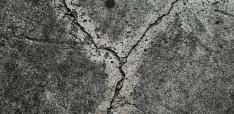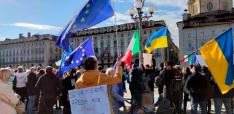A Brief History of Chemical Warfare: from Sparta to Syria

William King gives a historical overview of chemical warfare.
The assassination of Kim Jong-nam with VX on 13 February and the recurrent use of Sarin against civilians in the Syrian conflict have thrust chemical warfare agents back in the international spotlight. What are these agents, and where did they originally come from? How does their recent use fit within the history of chemical warfare?
By focusing on these specific points, we can often forget the substantial history of chemical warfare. We often think of World War I as the start-point for the use of chemical warfare, but the earliest known case of a chemical incendiary being used to create a poison gas took place in 429BC. During the siege of Plataea1, Spartan soldiers built a substantial woodpile outside the city wall. The woodpile was ignited with pitch and sulphur, creating blue flames and an acrid stench. By burning sulphur, the Spartans released toxic sulphur dioxide gas over the defenders and the Plataeans soon abandoned their posts.
There is a long history of militaries using chemicals to create smoke, spread toxic clouds and to sabotage enemy forces. One well known case of a feared chemical incendiary weapon was that of legendary Greek fire, used to spread fear and death in the 7th and 8th century AD. Even if we look to the Napoleonic Wars, in March 1818, Lord Cochrane proposed a plan to use ‘stink vessels’ (also known as sulphur vessels) against the French Navy. These ships, layered with coke and sulphur, would be sent amongst the French fleet and ignited to emit a choking gas.
The first substantial use of chemical warfare, for a sustained period and on an unimaginable scale, was seen in WWI. Close-quarter fighting on the Western Front in WWI provided German military planners with an opportune environment to let loose phosgene, chlorine and from 1917, mustard gas. Phosgene and chlorine are predominantly known for causing severe choking in victims, and mustard gas for blistering. An additional military benefit to chemical warfare has always been the psychological effect, death by gas spreads panic, just like it did in the Spartan siege of Plataea.
While WWI highlighted the scale of chemical warfare use, the 1930s onwards showed the complexity that advanced scientific research could bring to the field. Chemical warfare was believed likely to be employed in a future world war.
In 1938, German researchers discovered a new chemical warfare agent, sarin. These scientists were attempting to find more effective pesticides, but instead, they discovered a lethal chemical agent that would still be in use today, in Syria, almost 80 years on. Sarin was just one of the nerve agents discovered by German research, two others being tabun and soman, but tabun is less lethal, and soman is harder to produce. Sarin was named after the discoverers: Schrader, Ambros, Ritter, and Linde. Unlike phosgene, chlorine and mustard, the primary role of sarin is to kill, and kill quickly. The gas is odourless and colourless, making detection exceptionally difficult. Within 1-10 minutes of exposure to a tiny amount, the victim suffers from paralysis of the nervous system, and dies from asphyxiation.
Even with Germany having a huge advantage with nerve gases, chemical warfare was not used in the Second World War in Europe. Until invading Allied armies uncovered nerve gas stockpiles, they were unaware of this alarming development. Why Germany did not initiate chemical warfare is a source of historical debate.
Jeffrey Legro outlines three interpretations2. The first is one of perception and realism: it was not believed in Germany’s advantage to use nerve gases against the Allies. Repercussions would have been severe and it was not known if the Allies also had these nerve gases. Secondly, did nerve gas actually fit with the countries fast-paced, high manoeuvrability military doctrine? As seen in WWI, chemical warfare slows down the speed of battles. Thirdly, Legro outlines an ingrained aversion to the use of chemical weapons in the Army. Which would explain why, even when it was clearly tacticlaly in the military’s advantage to use nerve gas, it still did not.
Regardless, the repercussions of German research were substantial. A new age in chemical warfare research dawned as the Soviet Union, the US and Britain realised the ramifications of the German development. The door had opened, and the race for more lethal, and more efficient, chemical warfare agents began in the tense climate of the Cold War.
Research in the UK led to the discovery of the V-agents (V for venomous) in 1954. Similar to the discovery of sarin, British researchers at Imperial Chemical Industries (ICI) were also searching for a pesticide, but instead discovered a series of agents far more lethal than sarin. Whereas sarin, when released, could last around a day, VX could remain deadly for weeks. VX was also extremely efficient at killing through contact with skin. While the UK did not mass-produce offensive chemical weapons after 1956, the US stockpiled substantial reserves of VX. During tests in the Utah desert in 1968, VX droplets were blown over the nearby area. Fortunately, there were no human casualties, but around 4,000 sheep did die.
Unfortunately, the same cannot be said for another significant marker in the history of chemical warfare use, the Iran-Iraq war that started in 1980. It was much later in the war, in 1988, that Iraqi forces dropped a concoction of chemical agents on the Kurdish city of Halabja. Thousands died from exposure to the lethal mixture of gases, which included nerve gases and mustard gas.
In the mid-1990s sarin was again used against civilians, this time in Japan. A doomsday cult called ‘Aum Shinrikyo’ was responsible for the attack. In June 1994, members converted a refrigerator truck, and released sarin near the homes of judges, killing eight people and injuring hundreds more. These judges were presiding over a lawsuit against the group.
In December 1994, an Aum Shinrikyo member used nerve gas to assassinate a man accused of spying on the group. VX was sprayed directly onto the victim’s neck. In a final incident in March 1995, group members punctured packets filled with sarin on the Tokyo subway during rush-hour. The attack killed twelve people and injured thousands more. As police were closing in on the organisation, members had rushed their production of sarin, making it far less potent than it would typically be. The cult showed the world how a non-state actor could produce and use nerve gases to kill and incite mass panic and fear.
In 1997, the Organisation for the Prohibition of Chemical Weapons (OPCW) was formed to check that countries are abiding by the Chemical Weapons Convention (CWC). The CWC bans the use, development, production, stockpiling and transfer of chemical weapons. Currently, 192 countries have signed the Convention, with one notable exception, North Korea. Malaysia, where the assassination of Kim Jong-nam with VX took place, is a signatory. As a result, the OPCW worked closely with officials in Malaysia in the investigation. OPCW representatives are also checking allegations of sarin use in Syria.
Chemical warfare capabilities, like other areas of defence science and weapons development, have evolved rapidly over time. But they have always been a tool to seek an advantage, whether over two thousand years ago, or today. One key element of their use is their psychological impact, which has a substantial reach far beyond their zone of use. Chemical warfare has a long history. What we are seeing today are sophisticated chemical agents, designed at peak periods of mobilisation in defence science, being used for a similar role: to cause casualties and spread fear.
The case of the assassination is slightly different, as the history of assassinations is more closely tied to biological, rather than chemical agents. But again, this is reflective of advances in science. Biological agents have been used for thousands of years to assassinate individuals, but now more sophisticated methods have been uncovered: whether that be plutonium, or VX. Same aim, just carried out with a more sophisticated tool.
William King is a second year PhD student at the LSE, focusing on British chemical and biological warfare policy in the Cold War. He previously studied at Cambridge and KCL. This post first appeared on the LSE's International History blog.
Photo credit: Defence Images via Foter.com / CC BY-NC
Footnotes
1.For more on ancient uses of CBW see: Adrienne Mayor, Greek Fire, Poison Arrows & Scorpion Bombs: Biological and Chemical Warfare in the Ancient World (Woodstock: The Overlook Press 2003).
2. Jeffrey W. Legro, Cooperation under Fire: Anglo-German Restraint during World War II, (Ithaca, N.Y.: Cornell University Press, 1995) pp.177-202.


